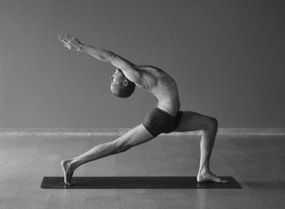|
As yoga teachers, the words we use are of the utmost importance. This is how we transfer information to our students. People come to a yoga posture class to gain a better understanding of their practice, make progress and generally feel better. We want to help them achieve these goals.
With this in mind, there are three categories of cues we can use. Let's look at the different types of cues and how we can incorporate them. TYPE 1: Cues that get the right result and teach people how their body works. This type of cue gets people to move their body in the direction of the pose, while putting their mind right where the action happens. To better understand this, we'll use the example of a backward bend of the spine. In all backward bends of the spine, we want the back muscles (erector spinae) to engage. Knowing this, a cue such as "engage your back muscles to bend your spine" teaches what to do and how to do it. We should use this type of instruction as much as possible. The sticking point becomes if people do not understand how to access the muscles we are asking them to use. This brings us to the second type of cue. TYPE 2: Cues that get the right result but do not teach people how their body works. These types of instructions get people to move in the shape of the posture, but don't put their mind in the right place. Let's stick with the backward bend example. Often we will say "lift your chest up." This cue almost always gets the right result in the body. However, the action that makes the chest "lift up" is nothing more than the back muscles engaging! So while this instruction teaches our students what to do, it does not teach them how. Over time this can lead to students that are very confused in their postures, and have their mind focused on areas of the body that will not help them do what they are trying to do. TYPE 3: Cues that do neither. Cues that do not teach what to do or how to do it, are usually born from the desire of the teacher to be creative or interesting. While it's a valid temptation, we should try not to fall for it. Our desires should never get in the way of our student's progress. Simple and clear instruction is the best road forward. The physical practice is hard enough as it is. All instructions are not created equally. If our goal is to help people as much as possible, we should focus on the cues that will do just that. Teach them what to do and how to do it.
0 Comments
Leave a Reply. |
AUTHORSScott & Ida are Yoga Acharyas (Masters of Yoga). They are scholars as well as practitioners of yogic postures, breath control and meditation. They are the head teachers of Ghosh Yoga.
POPULAR- The 113 Postures of Ghosh Yoga
- Make the Hamstrings Strong, Not Long - Understanding Chair Posture - Lock the Knee History - It Doesn't Matter If Your Head Is On Your Knee - Bow Pose (Dhanurasana) - 5 Reasons To Backbend - Origins of Standing Bow - The Traditional Yoga In Bikram's Class - What About the Women?! - Through Bishnu's Eyes - Why Teaching Is Not a Personal Practice Categories
All
Archives
May 2024
|







 RSS Feed
RSS Feed